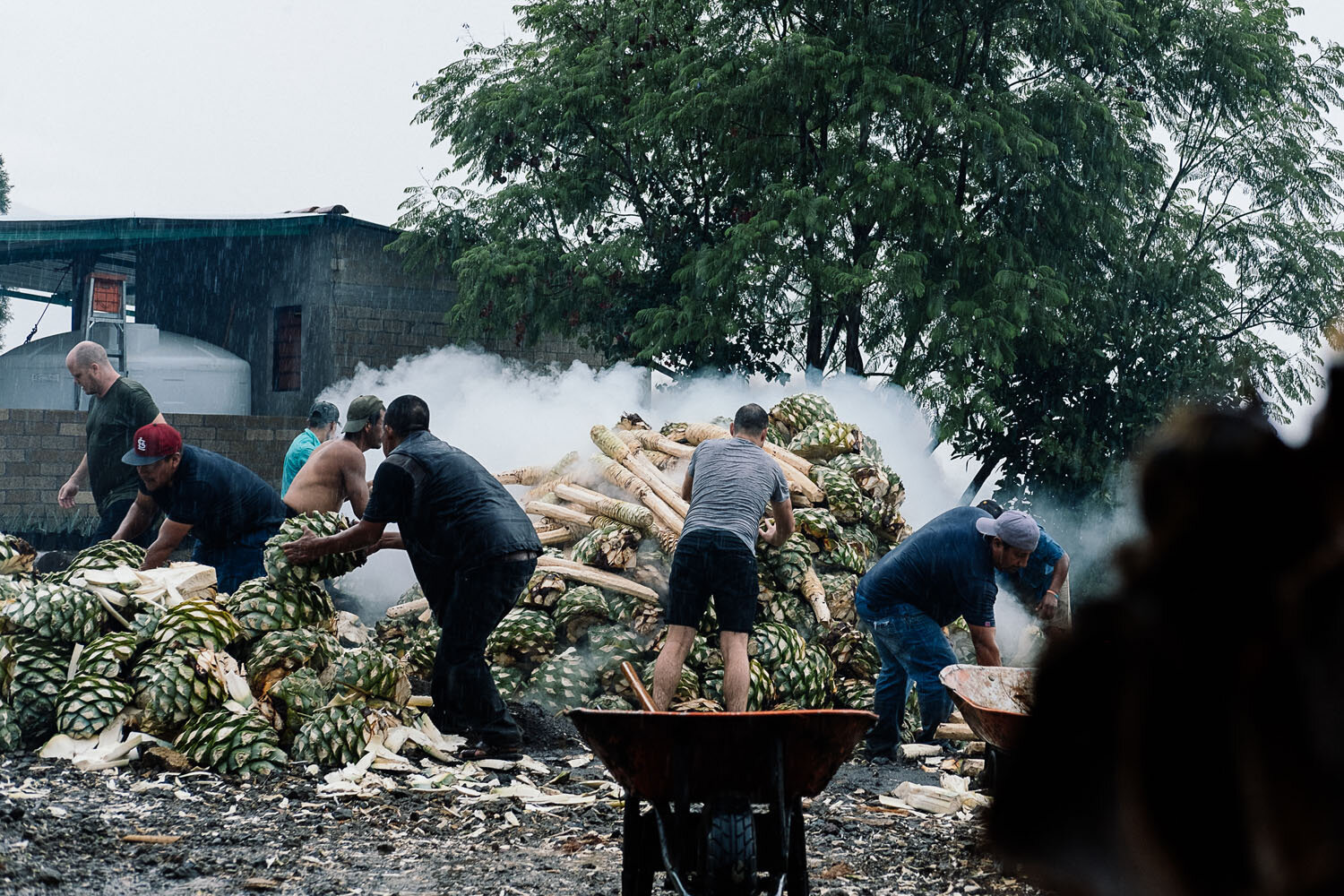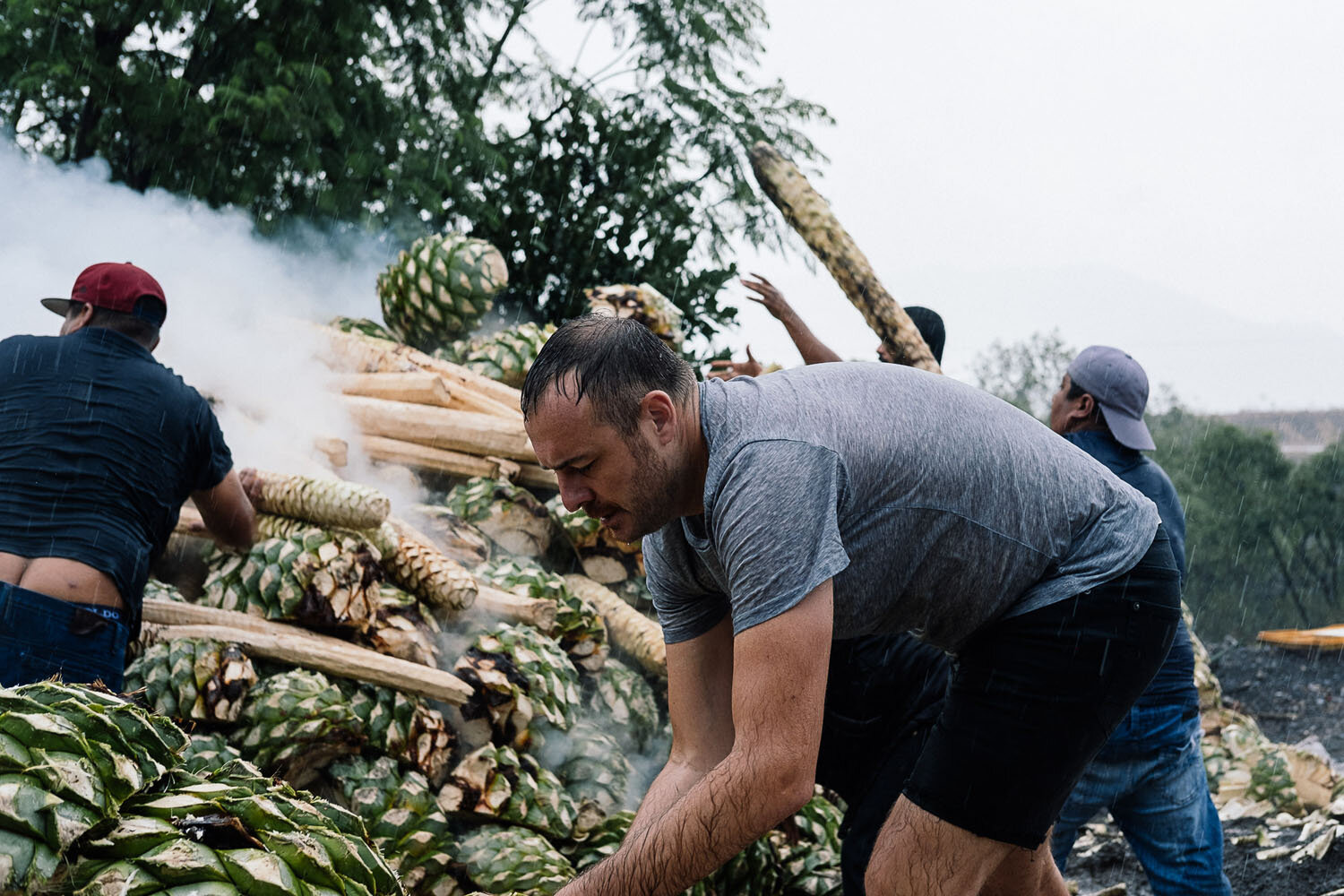A Guide To Mezcal
The Pure Artisan Spirit of Oaxaca
If you spend enough time in Oaxaca, at the right bars, within the right circles, you soon become aware that mezcal is viewed with a devotion almost equal to religion. It’s a spirit steeped in heritage and culture, respected for its artisan process. I personally am a convert. I have seen the light. I’m a born again Mezcalatarian. I have been touched by the hand of mezcal, reflected on its wonder and concluded that the righteous and the wise are in mezcal’s hands and no one knows whether love or hate awaits them.
I will preface this by saying that what follows is not an in-depth look at the history of Mezcal, how it’s made or an exploration of its many varieties. It is simply a story about a couple of mates who thought they were visiting a Palenque (mezcal farm) to learn the tradition and do some tastings of this age-old spirit and instead ended up doing a day of hard labour in torrential rain having the time of our lives.
Fast Facts:
It has recently been discovered that Mezcal dates back to pre-hispanic times. Some 2500 years old.
Mezcal is not Tequila. It is made from the same plant family, however the flavour and process is very different.
Tequila is made from one variety of Maguey or Agave. Mezcal is made from more than 32 varieties.
The primary state for Mezcal production today is Oaxaca. But it can also be made in Durango, Guerrero, Guanajuato, Michoacan, Puebla, San Luis Potosi, Tamaulipas, and Zacatecas.
It is traditionally produced by farmers using a laborious methods at primitive distilleries known as ‘palenques’. Traditionally it is sold or shared within villages to mark births, funerals, and everything in between.
A Maguey plant takes around 7-30 years to mature depending on the variety and one plant typically produces between 3-10 litres. Read that again and let it sink in. Or imagine a grape variety that takes 10 years to harvest and only makes a single case of wine - this is one of the reasons why Mezcal is so precious.
The Process:
Harvesting - The main type of cultivated maguey is called Espaldin most others known as Silvestres and grow wild. The Agave plant send up a a huge flower called Quixote just before it dies. This is the prime time to harvest the Agave at its peak maturity.
Cooking - Picture a large conical dirt pit with timber coals and white volcanic rock: the “Pinas” or maguey hearts are stacked in the pit and sealed with earth and hessian bags and left to cook for up to a week.
Crushing - This technique varies between artisans, from wooden mallets to donkey/horse power and in some cases modern machinery. with a large timber roller to modern machinery. But on the Garcia Morales farm (pictured) it’s all done by a horse (named ‘Tim’) pulling a 1 tonne stone wheel to grind the maguey into fibre.
Fermenting - This is a wild fermentation in open timbre vats and can take between 5-10 days depending on the temp.
Distilling - In traditional production the stills are made from clay, wood or copper.
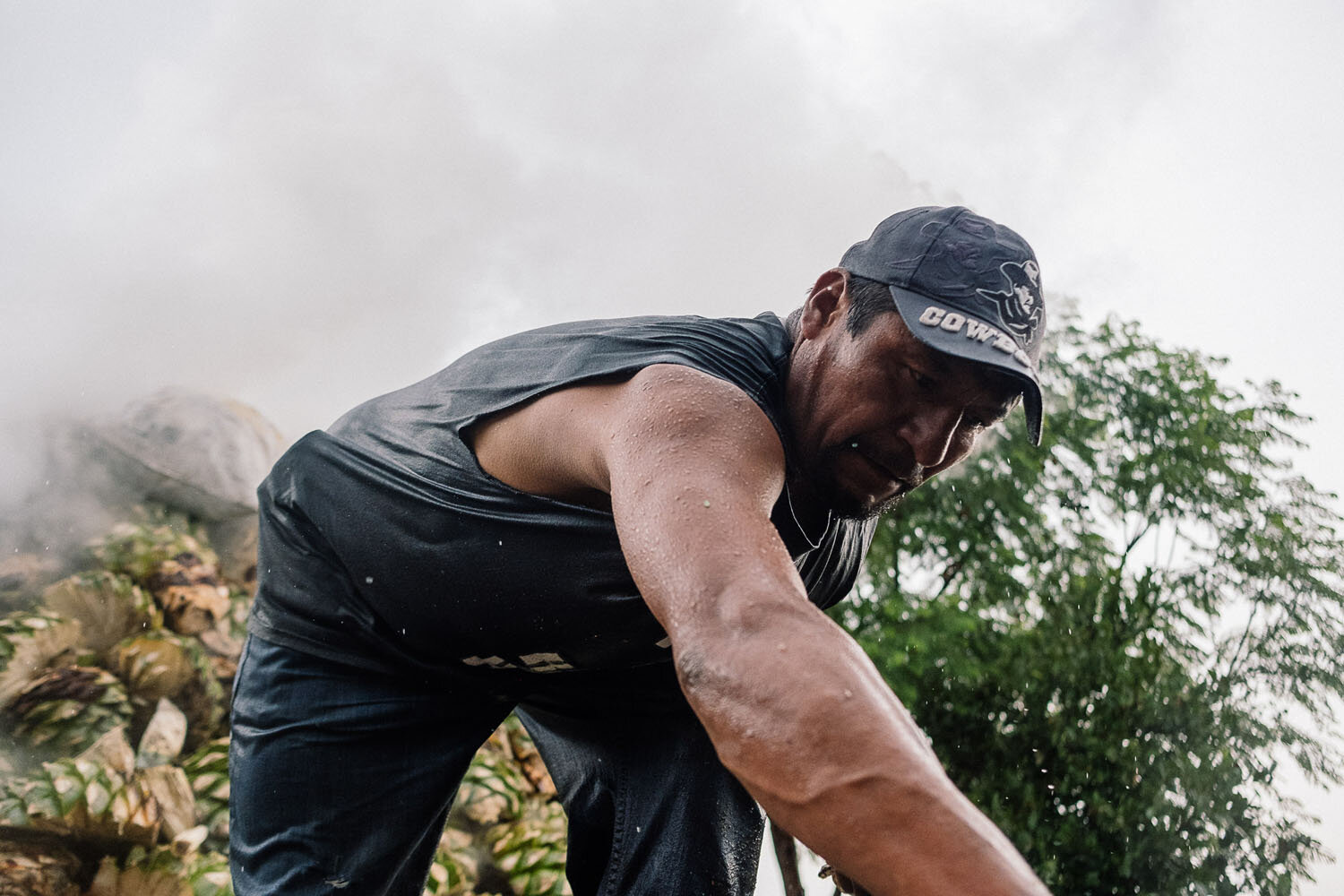
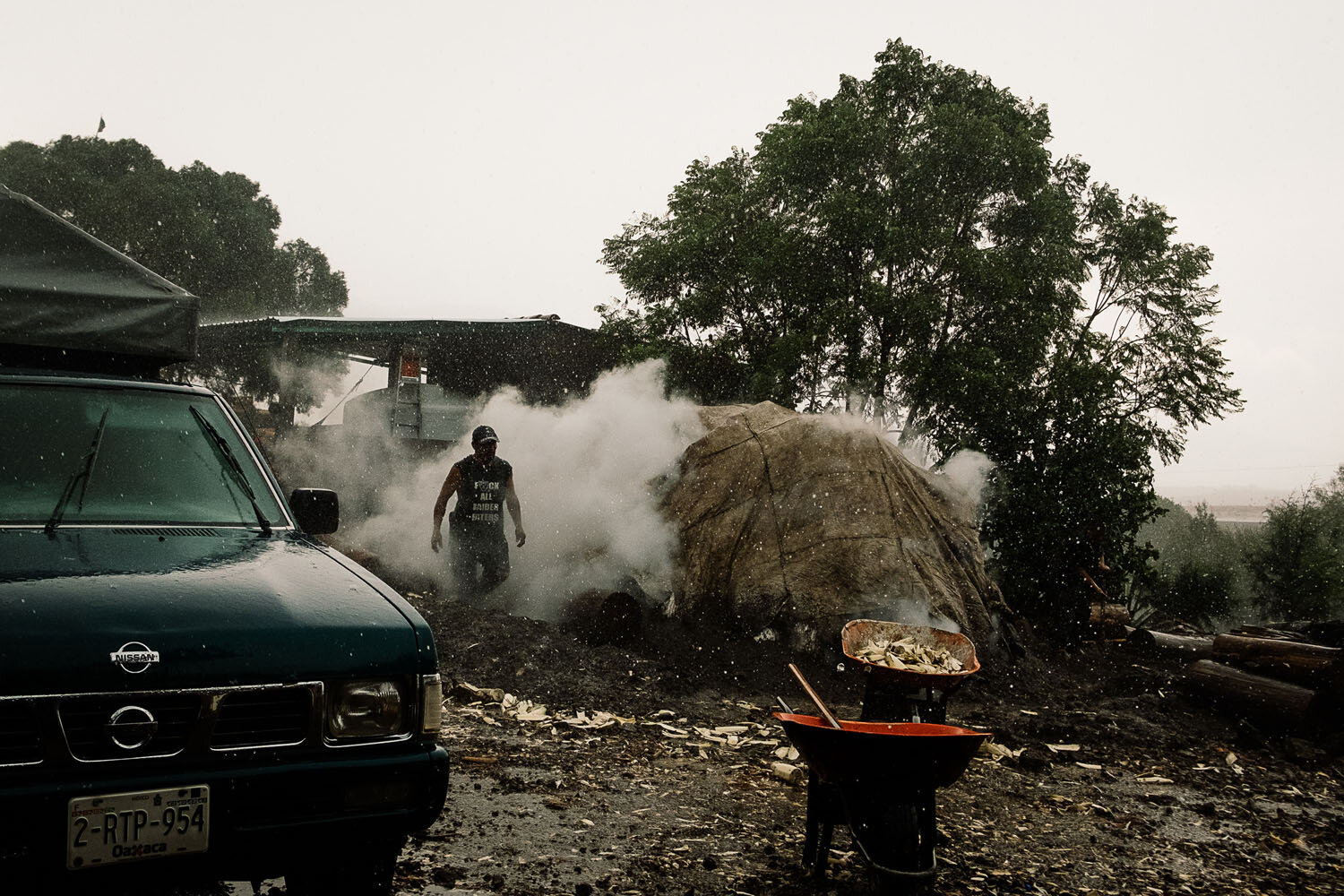
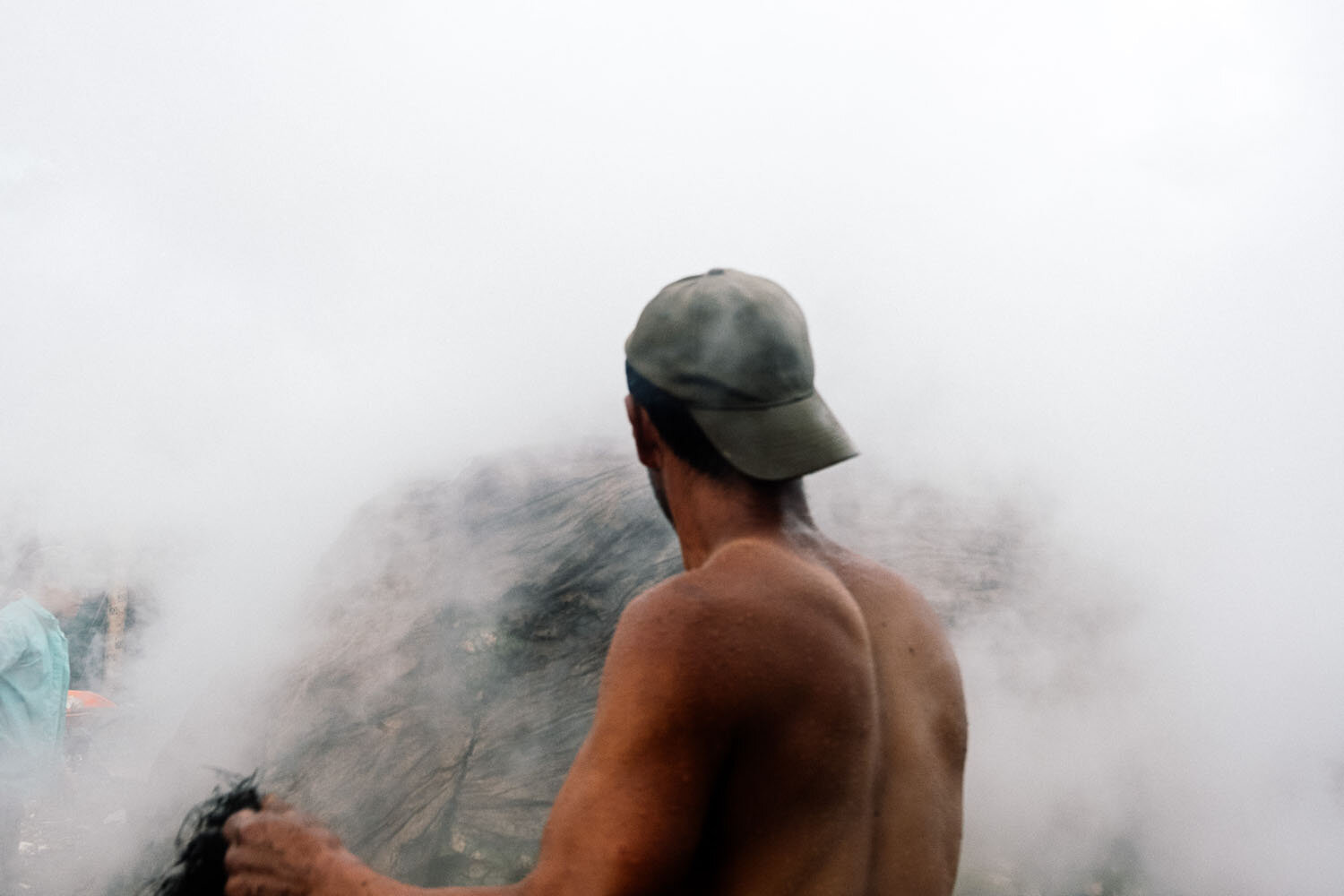

Ok, now that everyone is pretty much a Mezcalero, let me tell you about how instead of doing a traditional mezcal tour we decided to do some back-breaking work in torrential rain with the Garcia Morales family and Madre Mezcal.
Just a side note; I didn’t plan on making a journal entry about this day, or photographing it. I was there to work and learn. But I didn’t pick my camera up for a few moments and the experience was so wild I couldn’t help writing about it.
I met Tim in Oaxaca; he’s a fellow Aussie and has been living in Oaxaca with his wife Amy for the last seven years. We immediately bonded over stupid Australian humour, shared experiences of living in Central America and the Australian tall poppy syndrome and how we like to talk ourselves down. So It wasn’t until we had hung out a few times that I discovered Tim and Amy are amazing film makers recently releasing a feature documentary about the cacao industry in Peru. They’re also the production managers for one of the coolest Mezcal brands I’ve seen, Madre Mezcal. Check them out, everything about this is amazing. Tim took myself and Ben (a childhood friend) out to the farm, handed us a shovel, a decent dose of mezcal and we went to work.
Buried in the rolling hills that surround Oaxaca, is the quaint town of San Dioniso, a traditional village where family and mezcal are central to daily life. Leaving Oaxaca the road starts to wind around valleys, everything suddenly becomes green, goats, horses and cowboys replace traffic, fresh air blows away all of your cares as they flurry out through the open window.
As we drive through Santiago Matatlan the mezcal boom is noticeably evident. There are newly constructed Palenques, houses are getting larger and more modern. Mezcal has exploded globally in the last few years alongside the “slow movement”: farm-to-table foods, slow fashion and generally just moving away from a fast disposable culture.
The road bends as we leave Matatlan, the last of the town’s dogs bark, chasing our tires as the landscape becomes arid, the earth more red. We spot our first Tepeztate (Maguey variety) on the side of the road and Ben asks if he could take a cutting back to Hong Kong to try cultivate it. Tim laughs as he explains that this variety will take about 20 years to be ready for harvest. Here, for me lies the magic of mezcal.
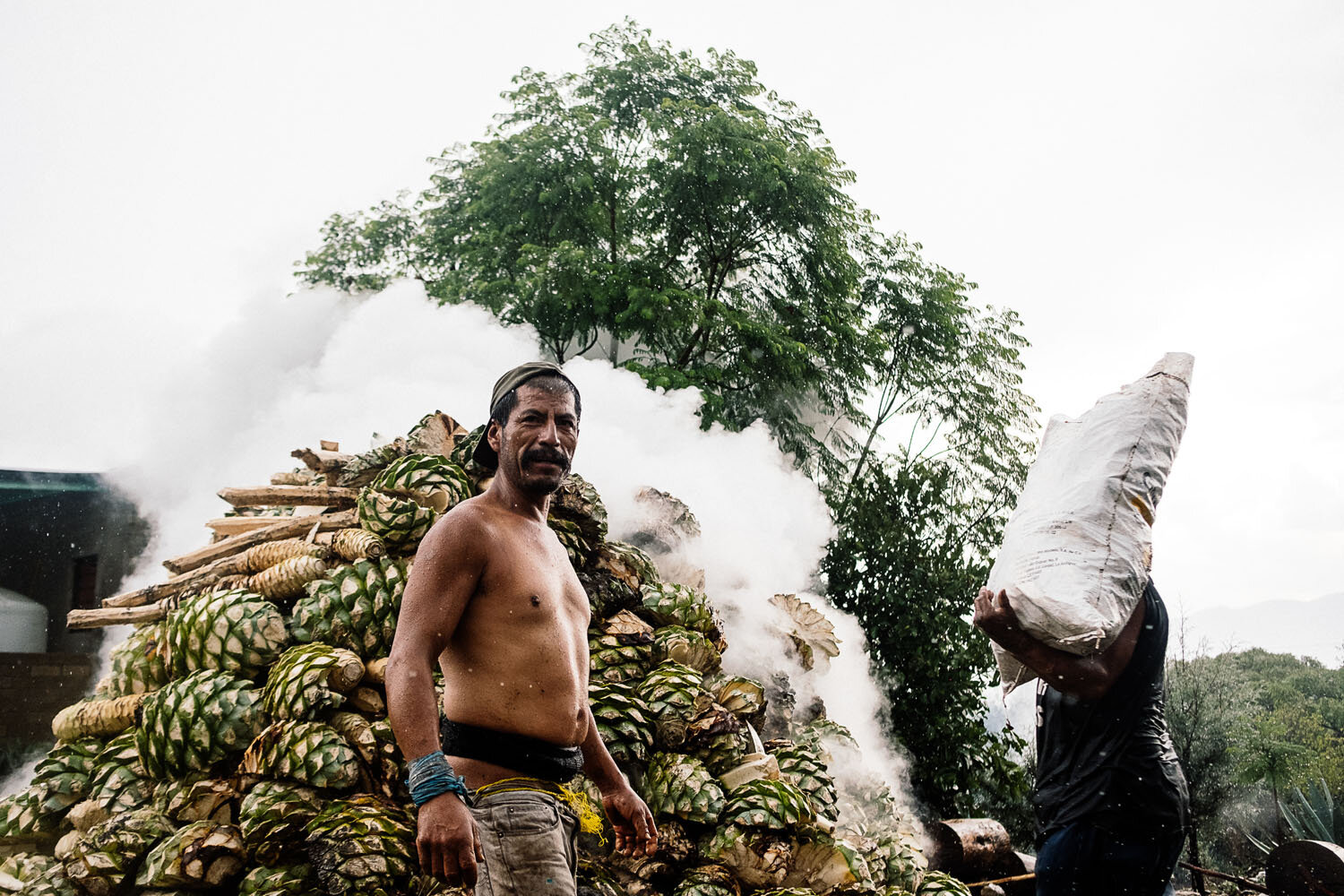
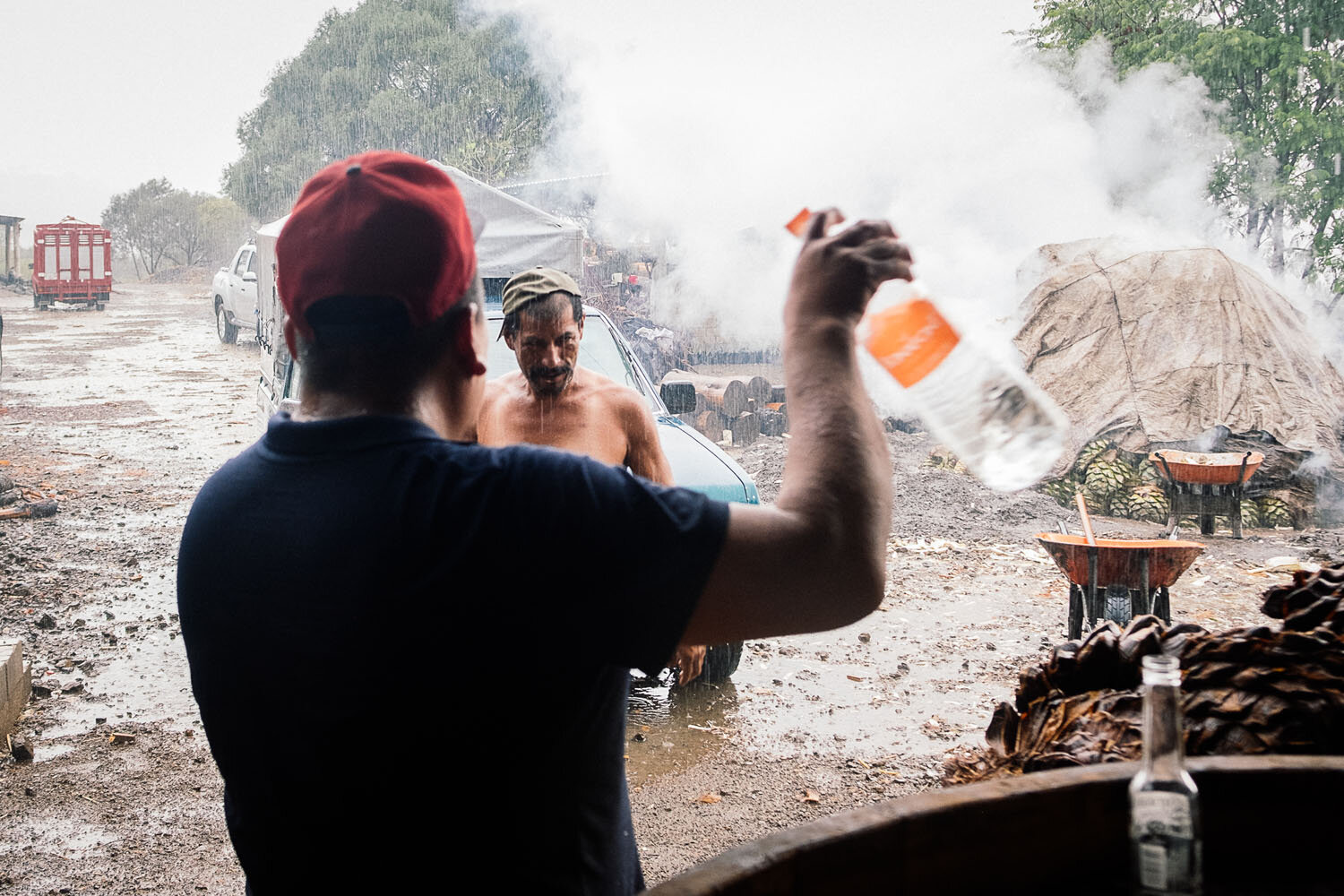
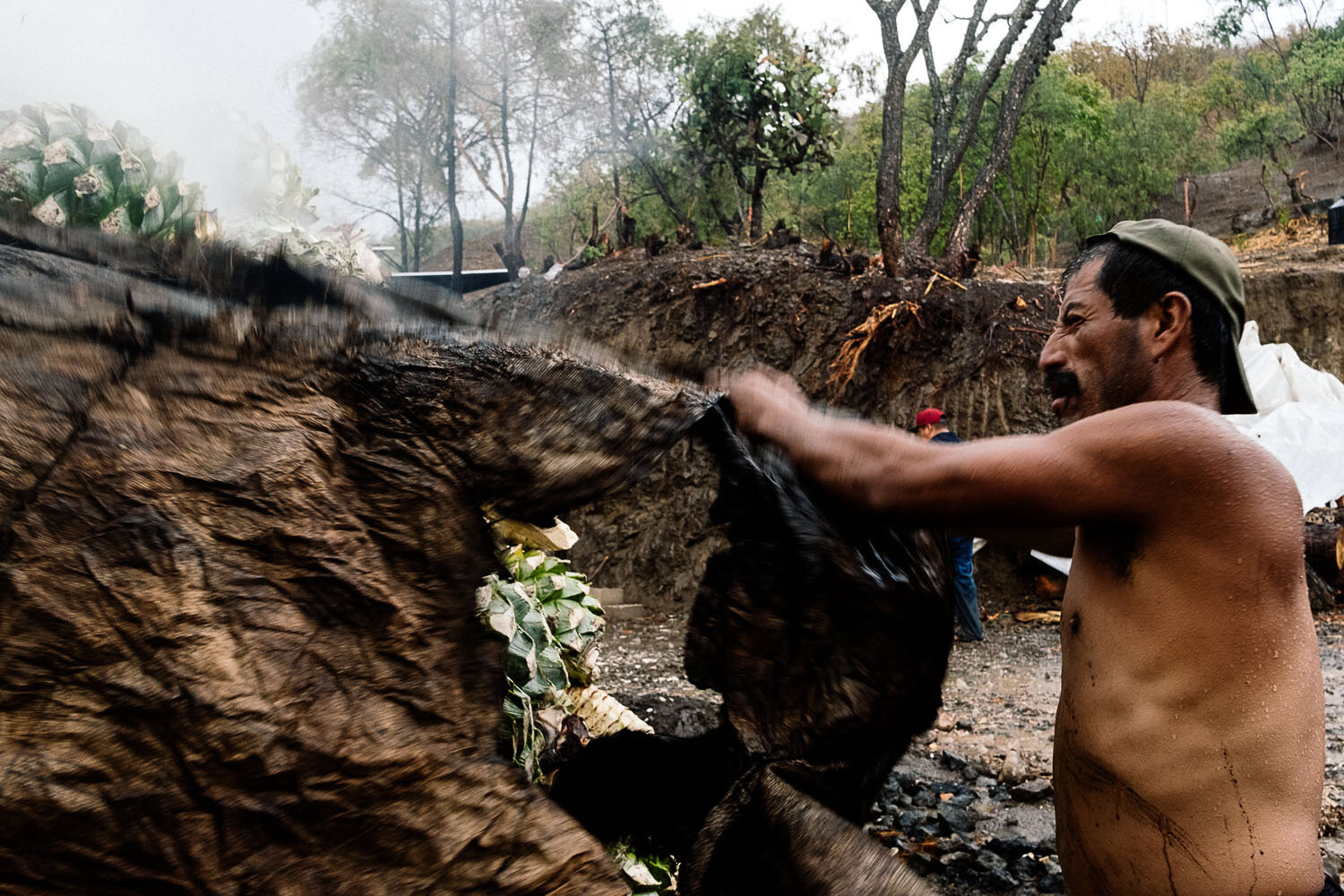
We arrive at the Garcia Morales palenque, greeted by barking dogs and weathered but friendly faces of the farmers. There are piles of maguey plants stacked along the dimpled driveway, wisps of dark grey smoke dance their way from the fire pit and blend into the clouds. There is nothing typically beautiful about the palenque; its not set up for tourists like the typical mezcal tours. It’s a place of hard work, steeped in tradition and family heritage. Old tools lay around and a pungent smell uzes from the fermentation tanks. IT’S PERFECT. In the distance you can hear chuckling men. No doubt laughing at the arrival of a couple of bright eyed gringos about to get their hands dirty.
We walk over to meet the boys, Jose the owner of the Palenque ensures that we each have a mezcal in our hands. He is a hard worker and a good businessman. His smile is honest and humble. We are given a tour; Jose proudly shows us a new batch he has been working on and we meet “Tim the Mule” (affectionately named after their production manager, our mate Tim). We laugh and make comparisons between the two Tims. The mule Tim is responsible for crushing the maguey. Our Tim is responsible for drinking it. We learn about the crushing, fermenting and distilling process and taste hot mezcal as it drips from the still.
We begin the roasting process. Those giant piles of maguey we saw on the way in have to be strategically placed in the pit then sealed with dirt and finally hessian bags. We hear a deep distant moan and the sky opens up with a roaring crack! The floods begin. It’s raining hard. Within moments we are ankle deep in water and moving fast to get the piña into the pit. Jose comments that this will be the first ever roasting they have done in the rain. I laugh at our luck and look up at Ben’s face; determined? defeated? or perhaps just thirsty as he tosses another piña into the pit.
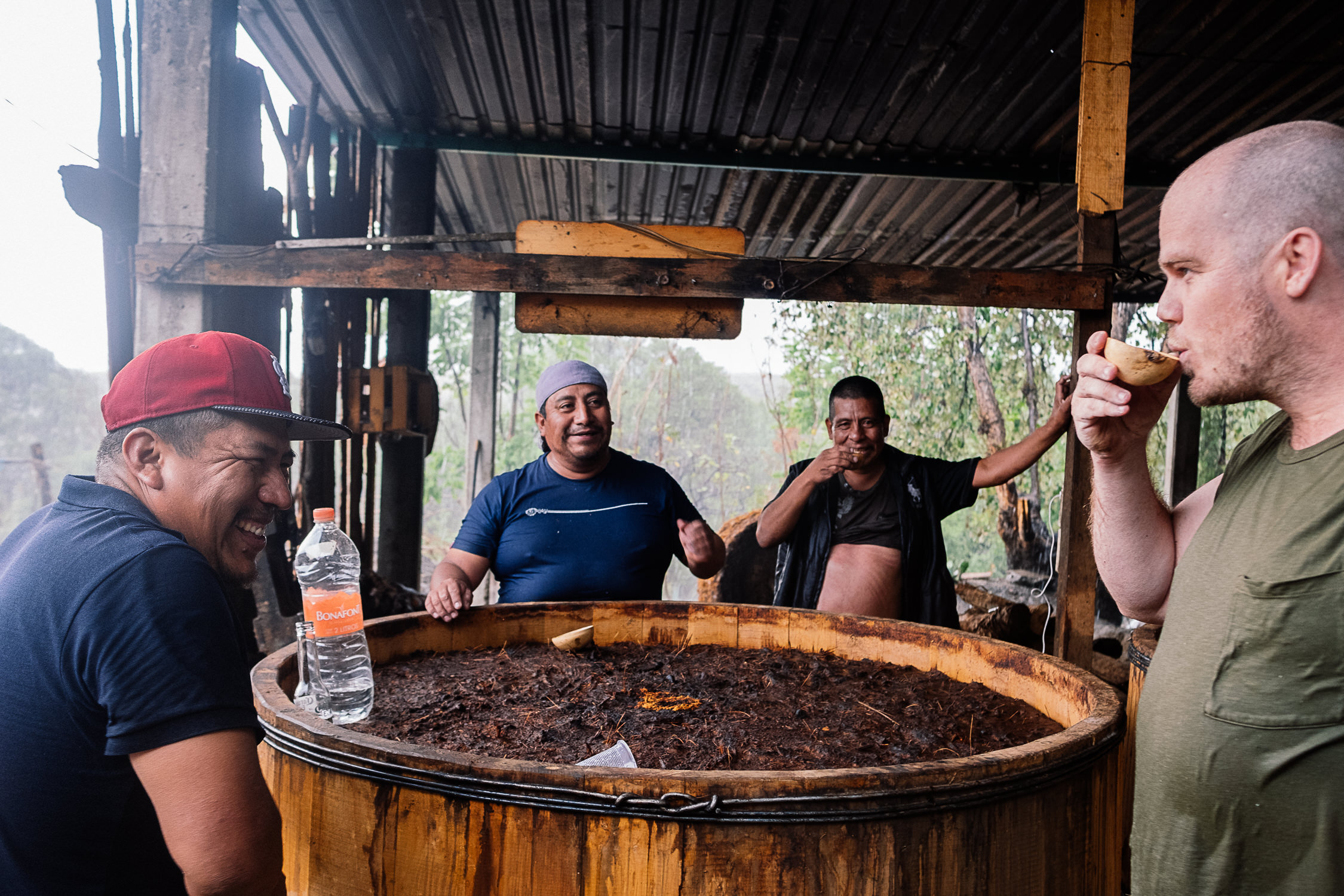
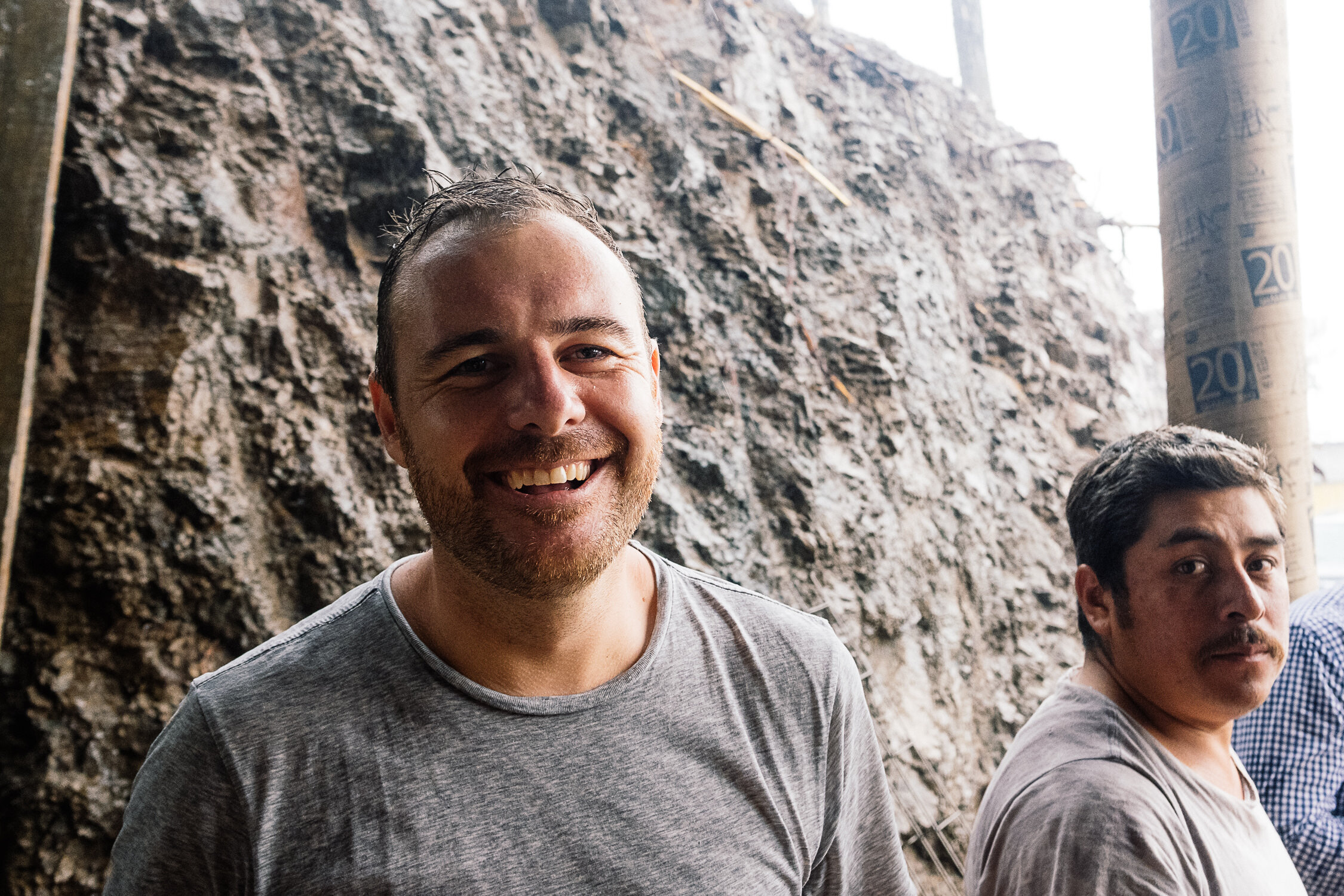
Over the next few hours, we would take turns escaping to the shed to sip on mezcal, laughing at the absurdity of what we were doing and scratching at our bodies incessantly (Maguey plants plus rain make for a seriously itchy combination). There was no us, the gringos, and them the professionals; we were working together with mutual respect and after it was all done we sat down together enjoying the feeling of a hard days work. Ben and I have a deepened appreciation, neither of us would ever forget this.
The production of mezcal remains an artisanal process. It is made by hand with friends and family and the joy of the process is evident in the final product. It’s completely pure, made from the juice of the maguey and water. That’s it. Nothing more. It is made in the same way that it has been for centuries.
There is nothing more satisfying than working hard at something you love, be that a long term project like Piece Collectors or a short term project like working on a Palenque for a day, learning about the process, heritage and art. Of course, getting a little drunk from the fruits of your labour doesn’t hurt.
If you’re lucky enough to visit Oaxaca and would like to learn more about mezcal click here, listen here and visit here






